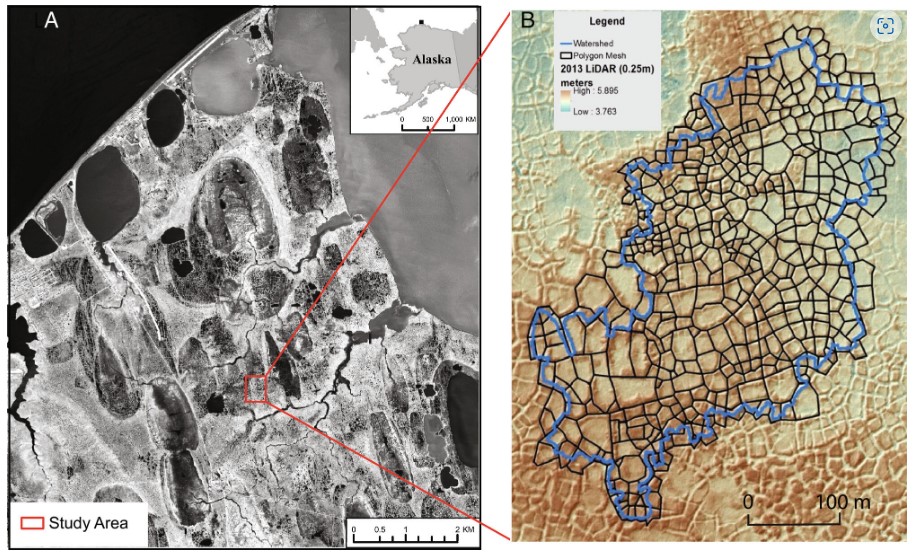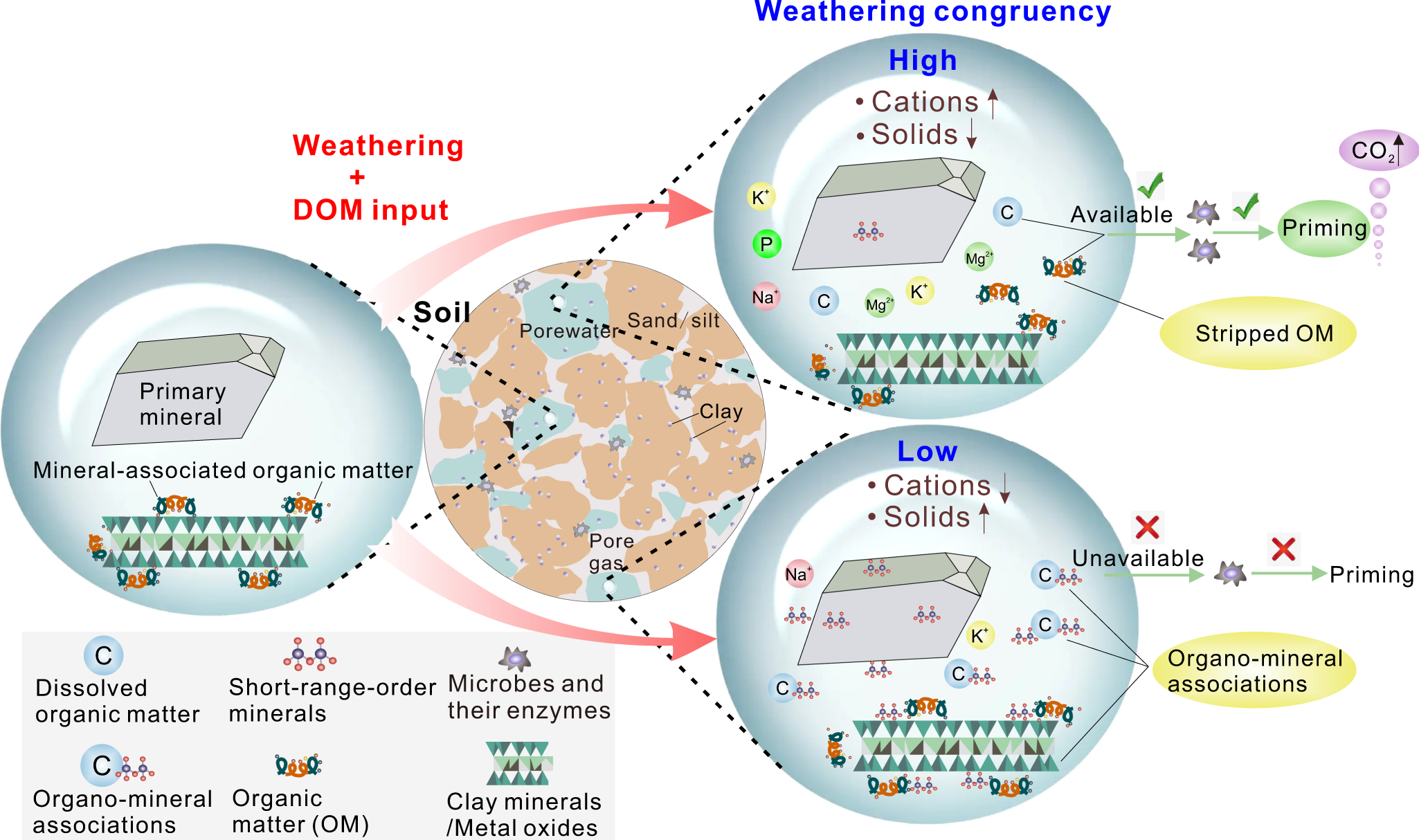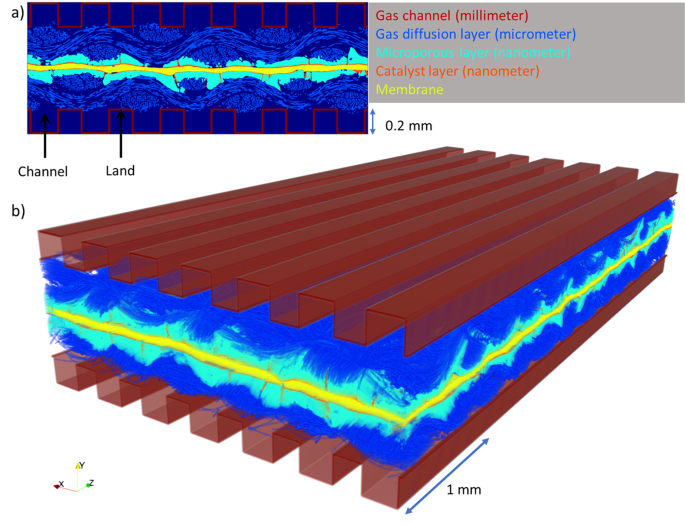2023-02-14 オークリッジ国立研究所(ORNL)
◆この永久凍土と化した北極圏のツンドラ地帯は、数千年にわたり膨大な量の炭素を閉じ込めてきたため、融解して大気中に温室効果ガスが放出される危険性があるのです。
◆国連の「気候変動に関する政府間パネル」は、土壌の沈下がフィードバックループを引き起こし、急激な雪解けを引き起こす可能性を、今後数十年間の大きな懸念事項として挙げています。土地の不同沈下による加速度的な雪解けは、より短い時間軸の小規模なスケールで観測されていますが、IPCCの評価では、長期的に何が起こりうるかについては不明でした。
◆そこでORNLは、ATS(Advanced Terrestrial Simulator)と呼ばれる高精度の物理ベースの水文学モデルを用いて、詳細な実測を行い、土地の進化を理解するために科学者に協力したのです。
◆その結果、大きな氷が溶けて地面が沈み続けるにもかかわらず、不均一な沈下はより乾燥した景観をもたらし、今世紀末までのプロセスの加速を制限することがわかったと、米国科学アカデミー紀要に記述されています。
◆研究者たちは、北極圏の地形に多角形を形成する氷の楔(表面を割って地中に伸びる長い氷片)を特徴とするツンドラの広い領域に焦点を当てました。氷河水文学のシミュレーションは、この多角形のツンドラで行われた測定に基づいて行われました。
<関連情報>
- https://www.ornl.gov/news/study-finds-sinking-tundra-surface-unlikely-trigger-runaway-permafrost-thaw
- https://www.pnas.org/doi/10.1073/pnas.2212171120
ツンドラ地帯の乾燥は、地盤沈下による永久凍土融解の加速を抑制する Drying of tundra landscapes will limit subsidence-induced acceleration of permafrost thaw
Scott L. Painter,Ethan T. Coon,Ahmad Jan Khattak,Julie D. Jastrow
Proceedings of the National Academy of Sciences Published:February 13, 2023
DOI:https://doi.org/10.1073/pnas.2212171120

Significance
Topography change caused by melting ice in Arctic soils has the potential to accelerate permafrost thaw and trigger abrupt and large-scale change in the Arctic. We extended a site-scale permafrost thermal hydrology model to represent ground subsidence and combined it with new and existing data from a well-characterized tundra site to better understand the consequences of thaw subsidence in a warming Arctic. Our spatially resolved simulations of a representative carbon-rich tundra site indicate that subsidence will not accelerate permafrost thaw significantly and cause abrupt permafrost thaw over large areas. However, thaw subsidence will likely lead to more runoff and significantly accelerate drying of the tundra landscape in a warming climate with important effects on sensitive Arctic ecosystems.
Abstract
We used a model for permafrost hydrology informed by detailed measurements of soil ice content to better understand the potential risk of abrupt permafrost thaw triggered by melting ground ice, a key open question associated with permafrost response to a warming Arctic. Our spatially resolved simulations of a well-characterized site in polygonal tundra near Utqiaġvik, Alaska, agree well with multiple types of observations in the current climate. Projections indicate 63 cm of bulk subsidence from 2006 to 2100 in the strong-warming Representative Concentration Pathway 8.5 climate. Permafrost thaw as measured by the increase in active layer thickness (ALT)—the thickness of the soil layer that thaws each summer—is accelerated by subsidence, but the effect is relatively small. The ALT increases from the current-day value of approximately 50 cm to approximately 180 cm by 2100 when subsidence is included compared to about 160 cm when it is neglected. In these simulations, previously identified positive feedbacks between subsidence and thaw are self-limiting on decadal time frames because landscape runoff and increasing evapotranspiration result in drier tundra with weaker surface/atmosphere coupling. These results for a tundra site that is representative of large swathes of the Alaska North Slope suggest that subsidence is unlikely to lead to abrupt thaw over large areas. However, subsidence does have significant effects on the hydrology of polygonal tundra. Specifically, subsidence increases landscape runoff, which helps maintain streamflow in the face of increased evapotranspiration but also causes drier tundra conditions that could have deleterious effects on sensitive Arctic wetland ecosystems.



